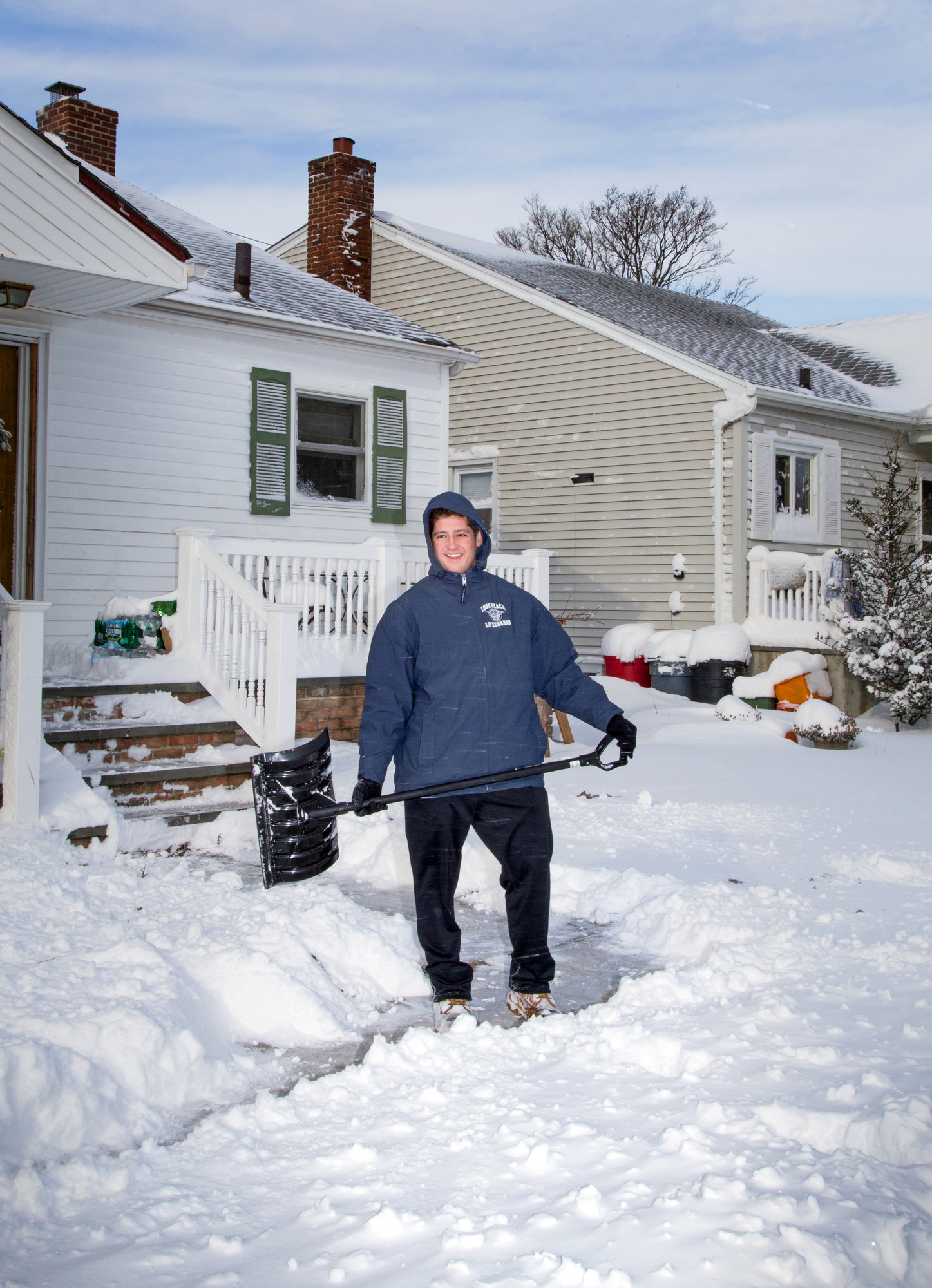Winds and single-digit temperatures make for dangerous combination
LBFD responds to numerous calls for frozen pipes amid cold snap
In anticipation of brutal wind chill values of as low as 15 to 20 degrees below zero, the National Weather Service on Monday issued a wind chill advisory for the majority of the tristate area through Tuesday. Temperatures remained in the single digits on Tuesday.
A wind chill advisory means that the combination of bitterly cold air and stiff winds can rapidly lead to frostbite and hypothermia if precautions are not taken, according to the weather service. It warned people in affected areas to wear a hat and gloves if they had to go outside. A wind chill of -20 degrees will cause frostbite in just a few minutes.
When temperatures drop, one major concern for homeowners — especially those who are rebuilding in the aftermath of Hurricane Sandy — is frozen pipes. West End resident Sam Gallo said that, although her newly built home has a roof, siding and windows protecting it from the elements, National Grid has yet to hook up the gas to her house — after two months of requests— and she is worried her pipes may freeze when temperatures plummet.
The Long Beach Fire Department said on Monday that it had already responded to multiple alarms regarding frozen and broken water pipes inside homes and apartments.
Long Beach CSEA workers from the water distribution department responded to numerous calls as well, shutting down the water in affected areas while working in freezing temperatures to make safety repairs.
The New York State Office of Emergency Management advises residents to insulate pipes that are most susceptible to freezing — usually those near outer walls or in crawl spaces or attics —before a storm. Pipes can be wrapped in insulation, or covered in layers of old newspaper and then wrapped in plastic, to keep out moisture. In extremely cold weather, the department recommends letting faucets drip, and to make sure the heat is left on and set no lower than 55 degrees.
The following are some safety tips from the LBFD regarding frozen pipes.
•Ice forming in a pipe does not typically cause a break where the ice blockage occurs. It's not the radial expansion of ice against the wall of the pipe that causes the break. Rather, following a complete ice blockage in a pipe, continued freezing and expansion inside the pipe causes water pressure to increase downstream — between the ice blockage and a closed faucet at the end. It's this increase in water pressure that leads to pipe failure.
•Letting a faucet drip during extreme cold weather can prevent a pipe from bursting. It's not that a small flow of water prevents freezing; this helps, but water can freeze even with a slow flow.
•Rather, opening a faucet will provide relief from the excessive pressure that builds between the faucet and the ice blockage when freezing occurs. If there is no excessive water pressure, there is no burst pipe, even if the water inside the pipe freezes.
•A dripping faucet wastes some water, so only pipes vulnerable to freezing — ones that run through an unheated or unprotected space — should be left with the water flowing. The drip can be very slight. Even the slowest drip at normal pressure will provide pressure relief when needed. Where both hot and cold lines serve a spigot, make sure each one contributes to the drip, since both are subjected to freezing. If the dripping stops, leave the faucet(s) open, since a pipe may have frozen and will still need pressure relief.

 50.0°,
Fair
50.0°,
Fair 




